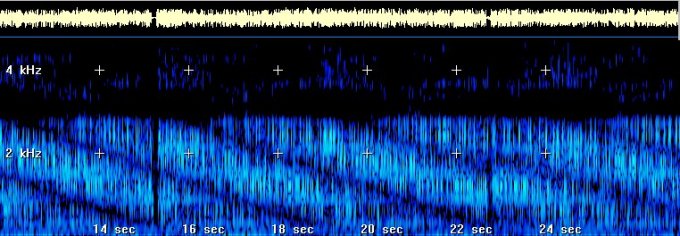Mystery Signals of the Short Wave
Dedicated to the more unusual, strange, bizarre and apparently meaningless signals on the short wave bands !
From the Archives
Russian Woodpecker | Yosemite Sam |
Site Information
What's New | About Me | Email |
Faders - XF
Frequency: (Many & Various) Included;
| 2470 kHz | 3188 kHz | 3215 kHz | 3382 kHz | 4020 kHz | 4062 kHz | 4458 kHz | 4477 kHz |
| 4480 kHz | 4496 kHz | 4545 kHz | 4560 kHz | 5092 kHz | 5105 kHz | 5195 kHz | 5311 kHz |
| 5328 kHz | 5398 kHz | 5468 kHz | 5787 kHz | 6505 kHz | 6796 kHz | 6824 kHz | 6848 kHz |
| 6875 kHz | 7384 kHz | 7500 kHz | 7658 kHz | 7665 kHz | 7813 kHz | 7997 kHz | 8185 kHz |
| 9126 kHz | 9138 kHz | 9244 kHz | 10139 kHz | 10478 kHz | 11100 kHz | 11515 kHz | 13431 kHz |
So called because when listening to them, they appeared to fade away then return. A favourite station of Chris from Enigma, these signals occupied a huge number of frequencies across the short wave bands. Having no apparent respect for other users, these stations were found across Fixed, aeronautical, shipping and Amateur bands.
To listen to, the signals had a constant pulsed pitch, like a motor bike. The reason for the fade was because each burst lasted 7.5 seconds, after which one of three things happened:-
a) Continued for 7.5 secs at full power - (Noticeable break between bursts).
b) Continued for 7.5 secs at reduced power.
c) Stopped completely - but if you kept listening, it would most likely reappear!
The signals were synchronised with the Time Standard, - as checked against a Radio-Controlled Clock or the telephone "Speaking Clock"- exactly on each minute you would find a corresponding burst start or finish.
Monitoring a fader frequency that had gone quiet, I noticed a single 7.5 sec burst every 15mins, exactly on the quarter-hour. This would indicate the system was always operational, even when not transmitting.

"Faders" (59 kb)
Analysis by ENIGMA showed that Faders were actually a wide multi-channel FM, (Frequency Modulated), signal with peaks at:-
500 Hz 1100 Hz 1400 Hz 2000 Hz 2600 Hz 3400 Hz
An audio spectrogram of the signal is both curious and revealing. The frequency of the signal can be seen to sweep linearly, from high to low, switching back to the high frequency and repeating the process continually. So it would seem that instead of the frequency peaks being fixed at the frequencies given above, they sweep high to low.
In order for a receiver to correctly receive and decode these sweeping frequencies, it would need to be exactly synchronised to the transmitter. This is where the time standard comes in, for provided both receiver and transmitter are locked to the same time standard, and sweeping the frequencies exactly in synch, decoding could easily be achieved.
One 7.5 sec sequence shown in centre with parts of the leading and following sequences

Investigation indicated that some of the signals were transmitted from RAF Mildenhall, Suffolk, UK., and were almost certainly a secure digital communication system, with the weak fader signals being responding transmitters at other locations.
May have been part of a NATO secure data communication system known as LOCE - Linked Operational Intelligence Centres.
The faders, which had been heard on the shortwave bands for something like 30 years suddenly disappeared. No transmissions have been reported since May 2001.
Most likely these communications have gone over to satellite or been replaced by some other means of communication. Given the large number of these signals and their high usage, it just doesn't seem possible that they were simply redundant.
Any information welcome